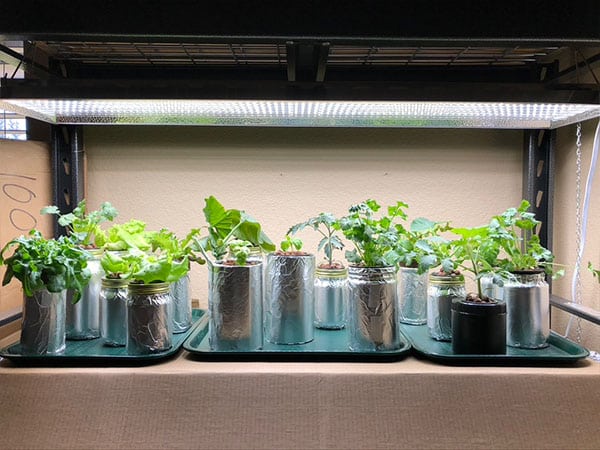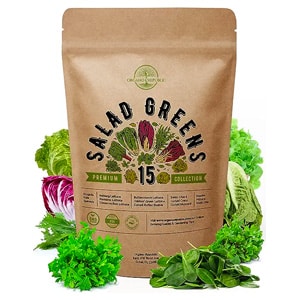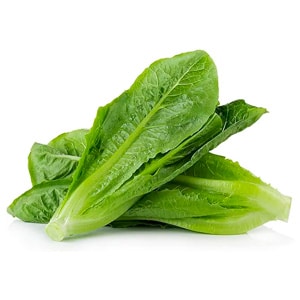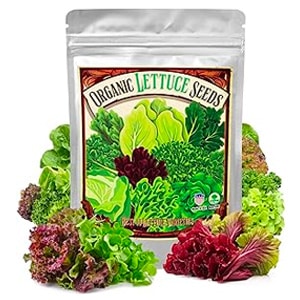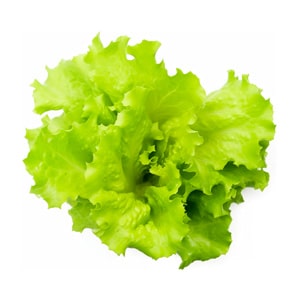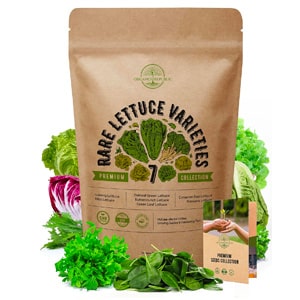What are the Best Containers for the Kratky Method?
There are a few things to consider when choosing containers for the Kratky method of hydroponics. The first is the size of the container. The container should be large enough to accommodate the plant’s root system, but not so large that it is difficult to manage. Second, all containers should have good drainage so that excess water can easily escape. Third, the container should be made of a material that is inert and will not leach chemicals into the water. Some good options for materials include glass, plastic, and ceramic. Finally, the container should be clear so that you can easily monitor the plant’s roots.
Kratky Container Materials and Sizes
There are a variety of containers that can be used for the Kratky method, but the best options are those that are large enough to accommodate the plant’s root system, have good drainage, and are made of inert materials. Glass, plastic, and ceramic containers are all good choices. Clear containers are also useful so that you can easily monitor the plant’s roots.
In this article, we will talk about the various containers that are best suited for Kratky hydroponics.
- Kratky Mason Jars
- Kratky Plastic Containers
- Kratky Ceramic Containers
- Kratky Glass Containers
- Kratky Plastic Containers
- Kratky Metal Containers
Let’s dive in and learn all about Kratky containers and which containers work best for the Kratky hydroponic gardening method.
Kratky Hydroponic Containers – Our Favorite Containers and Supplies for Growing with the Kratky Method
Advertisement
I bought these CZ net cups and will never buy another brand. They have been used year over year 5+ years.
I love these gro-block rockwool cubes. They keep the rockwool off your hands and soak well.
Before I got these, I used clay pebbles and/or foam cutouts. These fit so much better and block all light.
This is only wishlist. I plan on trying these in the the fall. You can see in my pics I currently use tin foil.
As an Amazon Associate I earn from qualifying purchases.
Kratky Hydroponic Gardening Containers – Mason Jars
Mason jars are a popular container option for the Kratky method. The jars are typically made of glass, which is an inert material that will not leach chemicals into the water. Mason jars also have good drainage thanks to their wide mouths. However, mason jars are not always the best choice for large plants since their small size can limit root growth. While they do make larger mason jars, such as 2-gallon, it may be better to go to another container when you get that big.
That brings us to all glass containers for Kratky hydroponics, not just mason jars. You can use just about any glass container providing it is the correct size for the plants you will be growing in your Kratky hydroponic system. Mason jars are very popular with certain plant types. Consider the jar size and how many times you will have to fill it with water.
Glass Containers for Kratky Growing
Glass containers are a good option for the Kratky method because they are inert and have good drainage. Some kratky containers are made out of high quality glass that is durable and can withstand constant use. They are also clear so you can easily see the progress of your plants. Glass kratky containers are also easy to clean and won’t harbor bacteria like some plastic containers can. Overall, glass kratky containers are a great option for anyone looking for a high quality, durable, and easy-to-use option.
What are the benefits of using glass containers for kratky?
Glass containers are great for kratky because they allow for excellent airflow and prevent mold growth. Glass is also non-porous, so it doesn’t hold onto bacteria like plastic does. Plus, it’s easy to clean and disinfect.
What are some of the drawbacks of glass containers for kratky?
One of the main drawbacks of glass containers or jars is that they can be quite fragile. If you’re not careful, a glass jar or container can easily break. This can be a problem if you’re trying to grow delicate plants or if you’re using them to store expensive liquids. Another downside to glass containers is that they don’t insulate well. This means that your kratky won’t stay as warm as it would in a plastic or metal container. This can be an issue in colder climates. Finally, glass containers or jars an be more difficult to clean than other types of containers. They can also harbor bacteria and other contaminants more easily than other materials.
Where can you find glass containers suitable for Kratky?
The best place to find glass containers for Kratky is a local hardware store or online, such as on Amazon (see our featured products below that we use). Make sure the container is at least 2-3 inches taller than the plant you intend to grow. Also, ensure that the container has a wide opening so that you can easily access the plant.
Kratky Hydroponic Basil – Our Favorites for Growing Basil with the Kratky Method
Advertisement
As an Amazon Associate I earn from qualifying purchases.
Using Plastic Containers with the Kratky Method
Plastic containers are another popular option for the Kratky method. Plastic is an inert material that is also affordable and lightweight. Plastic containers also usually have good drainage thanks to their many small holes.
Clear plastic containers are a good option for the Kratky method because they allow you to easily monitor the plant’s roots. However, plastic containers can be difficult to clean and may need to be replaced more often than other types of containers.
What plastic containers work best for Kratky?
The best plastic containers for Kratky are those that:
- are at least 2-3 inches taller than the plant you intend to grow.
- the container should also have a wide opening so that you can easily access the plant
It’s also important to choose a plastic container that is made of high-quality material. This will ensure that the container is durable and won’t leach chemicals into the water.
What are some of the benefits of using plastic containers for kratky?
Plastic containers are a good option for kratky because they’re lightweight and affordable. They’re also easy to find and come in a variety of sizes. Plastic containers also usually have good drainage thanks to their many small holes.
What are some of the drawbacks of plastic containers for kratky?
One of the main drawbacks of plastic containers is that they can be difficult to clean. They can also harbor bacteria and other contaminants more easily than other materials.
Another downside to plastic containers is that they don’t insulate well. This means that your kratky won’t stay as warm as it would in a metal container. This can be an issue in colder climates.
Finally, some plastics can leach chemicals into the water, which can be harmful to plants. It’s important to choose a high-quality plastic container to avoid this problem.
Where can you find plastic containers suitable for Kratky?
The best place to find plastic containers for kratky is a local hardware store or online. Make sure the container is at least 2-3 inches taller than the plant you intend to grow. Also, ensure that the container has a wide opening so that you can easily access the plant.
Kratky Hydroponic Containers – Our Favorite Containers and Supplies for Growing with the Kratky Method
Advertisement
The perfect size for growing Kratky Container Tomatoes and they are FOOD GRADE.
No work hydroponic gardening system with 4 containers. Includes aerator and net cups.
These are great for your plants that do not take up as much space or water. I also like their square shape.
As an Amazon Associate I earn from qualifying purchases.
Using Metal Containers with the Kratky Method
Metal containers are a good option for the Kratky method because they’re durable and easy to clean. They also have good insulation properties, which means your kratky will stay warmer in colder climates.
What are some of the benefits of using metal containers for kratky?
Metal containers are a good option for kratky because they’re durable and easy to clean. They also have good insulation properties, which means your kratky will stay warmer in colder climates.
Metal kratky containers offer several benefits when used correctly. Metal kratky containers provide higher heat retention than other materials, which can be beneficial for plants that require a warmer environment. Additionally, metal kratky containers generally have better drainage and aeration capabilities due to their shape and material properties. This is important for maintaining healthy hydroponic conditions as adequate oxygen supply encourages strong root growth. Furthermore, metal kratky containers tend to have longer life spans than some other materials if maintained properly; this means less frequent replacements or repairs over time. Finally, it is important to note that metal kratky containers are usually certified as food-grade or kratky use so you can trust them to provide safe and healthy hydroponic conditions.
Overall, metal kratky containers have many benefits that make them an ideal choice for kratky setups. Considering all factors such as cost, durability, size requirements, and safety is key to choosing the right kratky container for your needs.
What are some of the drawbacks of metal containers for kratky?
The main drawbacks associated with metal containers for kratky are cost and durability. Metal containers tend to be more expensive than other materials, and they can rust or corrode over time if not properly maintained. Additionally, the weight of a metal container can make it difficult to move or transport. Finally, some plants may require larger root systems than what is provided by metal containers, making them less suitable for certain plants. However, metal containers can provide some benefits such as higher heat retention, better drainage and aeration, and longer life spans when properly cared for. Therefore, it is important to consider all factors before deciding whether a metal container is right for your kratky setup.
Another possible drawback of using metal containers for kratky is the potential leaching of metals into the hydroponic solution. Metals can be toxic to plants and can also reduce oxygen levels in the water, hindering plant growth. For this reason, it is important to use metal containers that are certified for food-grade or kratky use to ensure safety and healthy hydroponic conditions. In addition, you should regularly inspect your kratky container for any signs of corrosion or wear-and-tear so that any necessary repairs or replacements can be made in a timely manner.
Overall, metal kratky containers have some drawbacks but they can still provide many benefits when properly cared for. Considering all factors such as cost, durability, size requirements, and safety is key to choosing the right kratky container for your needs.
Where can you find metal containers suitable for Kratky?
The best place to find metal containers are from reusable sources, like coffee cans and #10 cans. You can also purchase containers from places like Amazon.
ADVERTISEMENT
As an Amazon Associate I earn from qualifying purchases.
Ceramic Containers & Kratky
Ceramic containers are a good option for the Kratky method because they are inert and have good drainage. However, ceramic containers can be expensive and may be difficult to find.
What are the best ceramic containers for Kratky hydroponic growing?
In general, any type of ceramic container can be used for Kratky hydroponic growing, as long as it is wide and shallow. However, some types of ceramic containers are better than others. For example, unglazed clay pots are a good option because they are porous and allow the roots to breathe. glazed ceramic pots are also a good option because they are non-porous and prevent the roots from getting too wet. Whichever type of pot you choose, make sure it has drainage holes to allow excess water to drain out.
Are ceramic containers fragile?
Ceramic containers can be quite fragile, so they may not be the best option if you’re looking for a durable container. However, some types of ceramic pots are stronger than others. For example, glazed ceramic pots are typically more durable than unglazed clay pots. If you’re concerned about your ceramic pot breaking, you can always wrap it in a protective layer of something like bubble wrap.
Do ceramic containers insulate well?
Ceramic containers do not insulate well, so they may not be the best option if you live in a climate that gets very cold. However, if you’re only growing plants that can tolerate cooler temperatures, then a ceramic pot may be fine.
How do you choose the right size container for kratky?
The size of the container is not as important as the width. The width should be at least twice the diameter of the root ball. If you’re using a hydroponic system, you need to make sure that the roots have enough room to grow and that the water can flow freely around them. If you’re growing in soil, you need to make sure that the roots have enough room to spread out and that the plant has enough space to grow.
If you’re not sure what size container to use, it’s always better to err on the side of too much space rather than too little. Your plants will thank you for it!
Kratky Container Conclusion
There are a variety of containers that can be used for the Kratky method, but the best options are those that are large enough to accommodate the plant’s root system, have good drainage, and are made of inert materials. Glass, plastic, and ceramic containers are all good choices. Clear containers are also useful so that you can easily monitor the plant’s roots. In this article, we talked about the various containers that are best suited for Kratky hydroponics.
I simply love growing in mason jars. I use various sizes of jars, but look for wide-mouth on all so I can switch my plants to larger mason jars when they get bigger. It is also easier to switch out solutions this way as well, so having extra mason jars on hand is a good idea. You can buy your mason jars in bulk.
One of the best ways to know which containers work best for you is to try many and come to your own conclusions!

